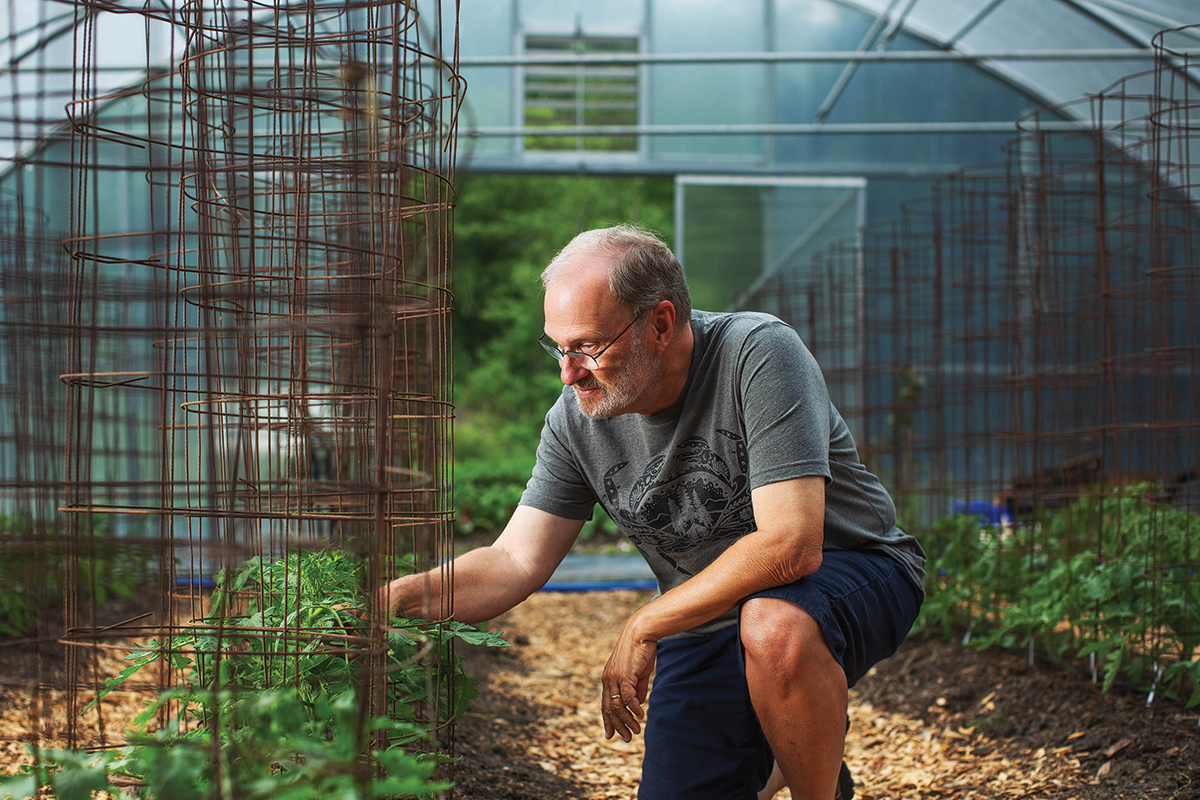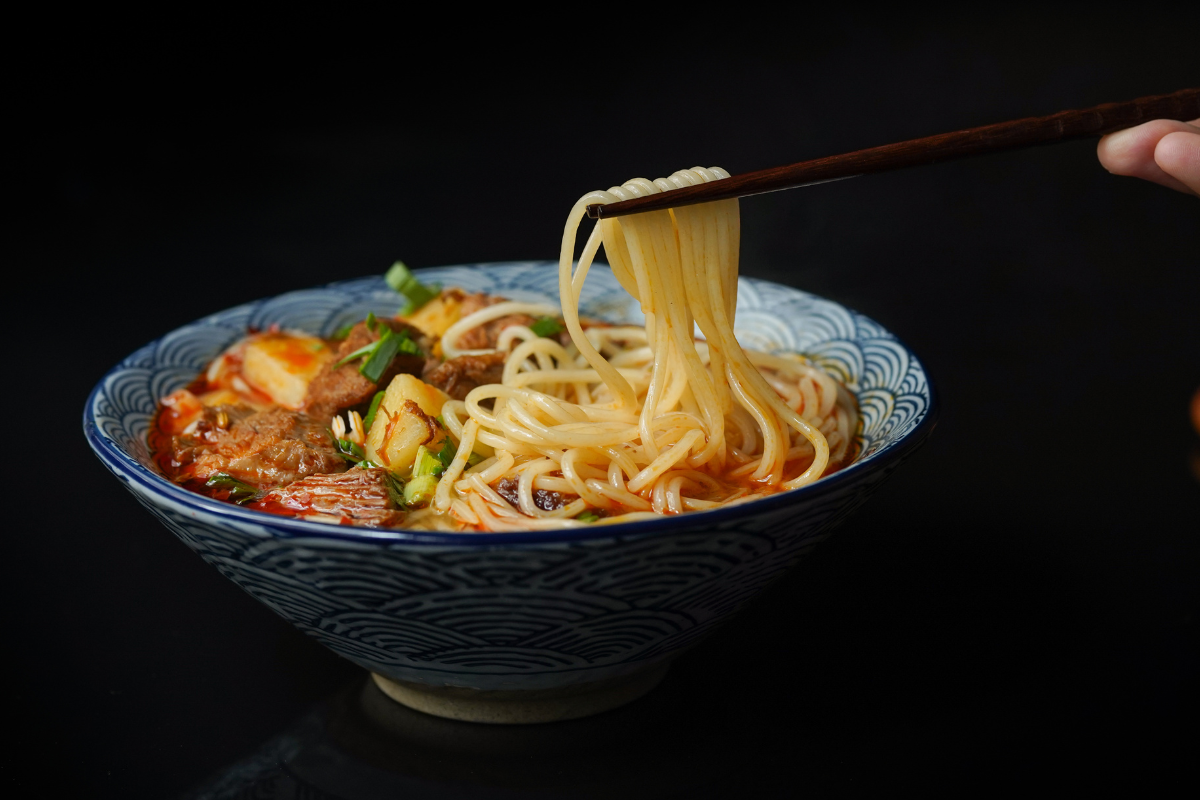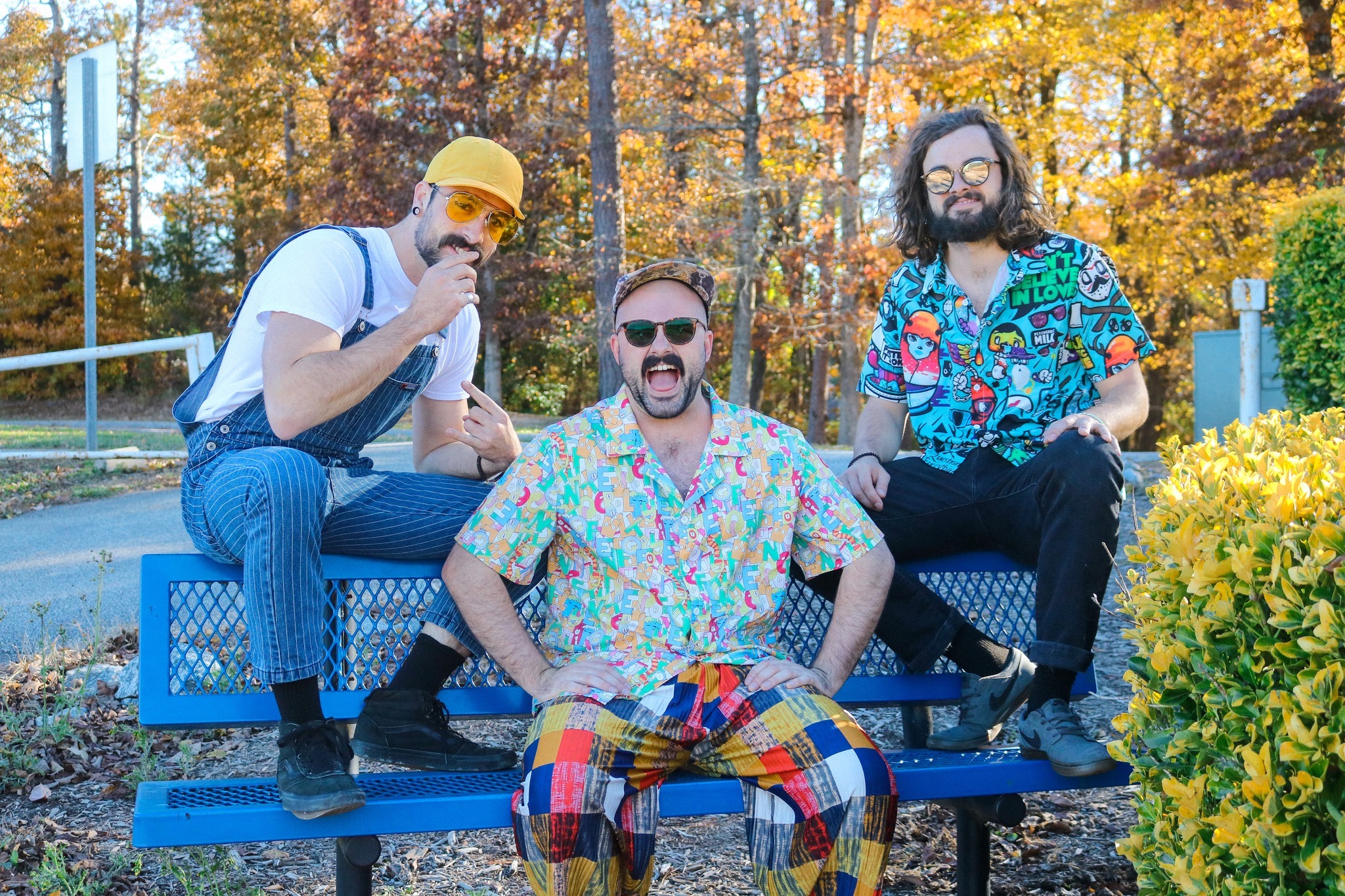“The NC Tomato Man” is a green-thumbed genealogist

STILL GROWING
“NC Tomato Man” Craig LeHoullier has changed locations (he moved from Raleigh to Hendersonville) but not focus. The celebrated horticulturalist branded the popular Cherokee Purple variety.
Photo by Colby Rabon
Since publishing his first book, Epic Tomatoes, in 2012, Craig “The NC Tomato Man” LeHoullier has traveled extensively to educate growers. In 2019, he and his wife retired from Raleigh to Hendersonville, and since 2020, he’s focused on regional events.
But he still talks plenty about tomatoes on his Instagram page (@nctomatoman), cultivates vegetables in straw bales on his rural property, and, most recently, runs the greenhouse at the local Veterans Healing Form, propagating some 115 tomatoes there.
Born in Rhode Island, where his father and grandfather were gardeners, LeHoullier caught the gardening bug early. After gaining his Doctorate in chemistry at Dartmouth College, he embarked on a 28-year career as a chemist for the pharmaceutical giant GlaxoSmithKline, where gardening became his escape — and eventually his legacy.
People from all over the world send LeHoullier seeds, and he claims to have tested more than 4,000 types of tomatoes. He is best known for propagating and naming the distinctive Cherokee Purple.

You turned the Cherokee Purple into a household name. How does a rare heirloom variety come to be ubiquitous?
There’s a story behind every variety. … I was speaking in Connecticut a few years ago and met a fellow named Walt Swokla, and he told me about a tomato that his grandmother brought over from Italy. He sent me seeds and I grew them. It was a wonderful, heart-shaped tomato that was quite different from others I’d grown. So we sent it over to Victory Seeds, and they grew it and got the story out, and that tomato is now called the Cancelmo Family Heirloom, named after Walt’s grandmother. He was so excited about it that he buys packs of seeds and includes them in his Christmas cards that he sends to friends and relatives.
So there’s a history for every tomato …
I have the letters of every person who’s ever sent me seeds. Now that I’m 67, I’m thinking long and hard about where that information belongs so that it doesn’t get lost someday. So on one level, I’m just gardening; on the other hand, I’m preserving history.
Second to apples, tomatoes may be the most popular crop grown in Henderson County. Are there any particular challenges about growing tomatoes in WNC?
The humidity really elevates [in the summer]. Wet foliage on tomato plants invites any of the fungal diseases that are floating around. Some people are starting to grow in hoop houses or under coverings to keep the rain off of the foliage, and if you do that, you can really extend the health of the plants by weeks, if not a month or more.
Any other tips?
It’s really all about watering at the bottom of the plant, not using sprinklers, and keeping the foliage as clean as possible. If you can find the leaves that have the brown-and-yellow spotting — those are either Septoria leaf spot or early blight — and you don’t have to spray them, you just need to remove the infected leaves.
Craig LeHoullier, Hendersonville, craiglehoullier.com, @nctomatoman on IG. LeHoullier will speak at Veterans Healing Farm on July 22 (veteranshealingfarm.org), at “Tomato Day” on August 6 at Hendersonville Farmers Market (hvlnc.gov), and at Sow True Seed on Aug. 30 (sowtrueseed.com).



